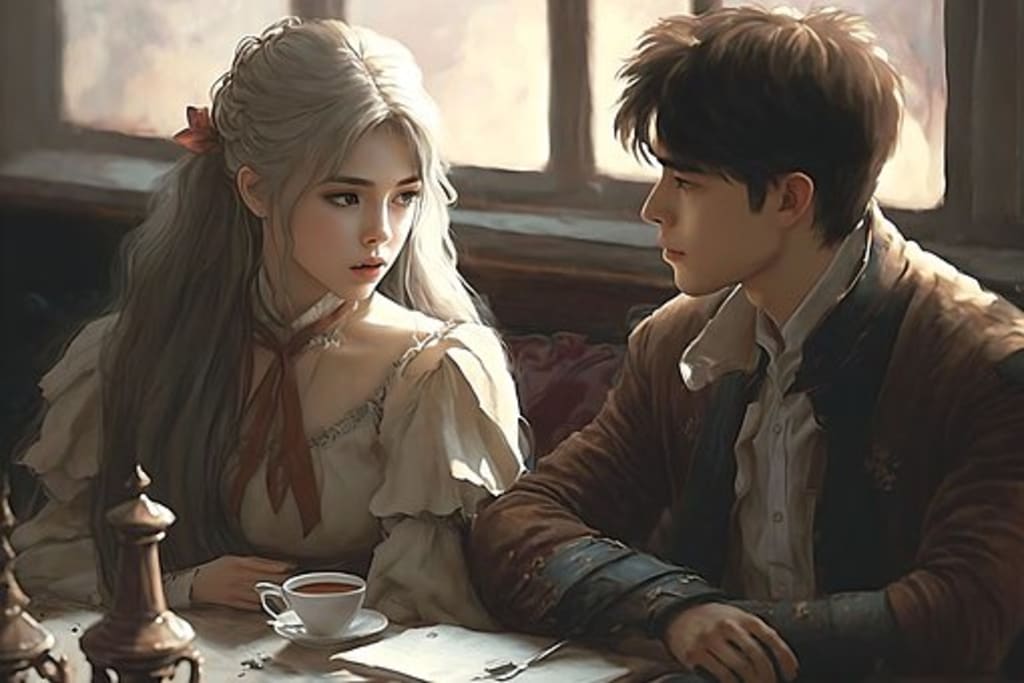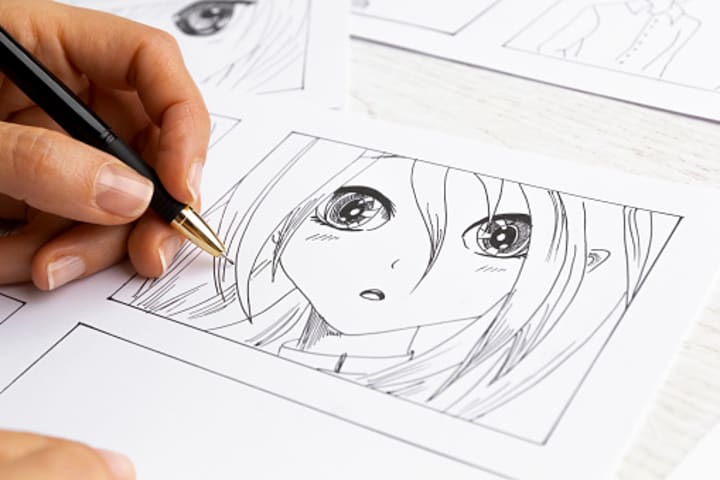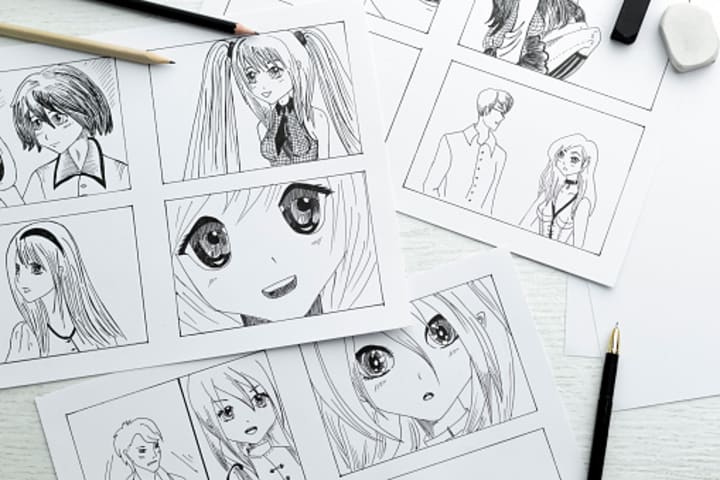
Animation is the art of creating the illusion of movement by quickly displaying a sequence of static images that minimally differ from each other. The word "animation" comes from the Latin word "anima," meaning soul or spirit. At its core, animation is about giving life to characters, objects, and worlds through motion and sound.
Animation is a fascinating art form that has captured the imagination of people around the world for many years. It allows artists to create moving images that can tell stories, evokes emotions, and inspire creativity. In this beginner's guide to making animations, we will explore the history of animation, different animation styles, techniques for creating natural and believable animations, and where the animation industry is headed.
From the earliest forms of animation to the present day
Animation has been around for centuries, with the earliest known examples dating back to the Paleolithic era. These early examples of animation involved creating drawings or carvings that were then flipped rapidly to create the illusion of movement. Over time, artists developed new techniques for animating, including shadow puppets, stop-motion animation, and hand-drawn animation.

In the early 20th century, the first animated films were created using hand-drawn animation techniques. Disney's Snow White and the Seven Dwarfs, released in 1937, was the first animated feature film and marked a turning point in the animation industry. In the following decades, animation continued to evolve, with the introduction of computer-generated imagery (CGI) in the 1990s and the rise of digital animation in the 2000s.
Today, the animation is used in a variety of fields, from film and television to advertising and video games. The technology used to create animations has advanced significantly, with powerful software tools and advanced hardware making it easier than ever for artists to create stunning animated works.
Different animation styles
There are many different animation styles, each with its unique look and feel. Some of the most popular styles include hand-drawn animation, stop-motion animation, and computer-generated animation.
Hand-drawn animation:
Hand-drawn animation involves creating a series of drawings that are photographed or scanned and then played back in sequence to create the illusion of movement. This style of animation has been around for decades and is still widely used today, particularly in television series and feature films.

Stop-motion animation:
Stop-motion animation involves creating physical models or puppets that are moved incrementally and photographed to create the illusion of movement. This style of animation has been used in classic films like King Kong and The Nightmare Before Christmas and continues to be used today in both feature films and television series.
Computer-generated animation:
Computer-generated animation, or CGI, involves creating animations entirely using digital tools. This style of animation has become increasingly popular in recent years, particularly in films like Toy Story and The Incredibles. CGI allows artists to create highly detailed and realistic animations, but can also be used to create more stylized and imaginative works.
Techniques for creating natural and believable animations
Creating natural and believable animations is essential to making animations that resonate with audiences. Here are some techniques to keep in mind when creating animations:
Observe real-life movement:
One of the best ways to create natural-looking animations is to observe how people and animals move in real life. This can help you create animations that feel authentic and believable.
Pay attention to timing:
The timing of movements is crucial to making animations that feel natural. Pay attention to the speed and rhythm of movements, and make sure they match the action being depicted.
Add secondary motion:
Adding secondary motion, such as a character's hair or clothing moving in the wind, can help bring your animations to life and make them feel more realistic.
Use reference footage:
Filming yourself or others performing the actions you want to animate can provide invaluable reference footage that can help you create more accurate and believable animations.
The role of music in animation
Music is a powerful tool that can greatly enhance the impact of an animated work. From setting the tone and mood of a scene to evoking emotions and adding depth to characters, music can be used to great effect in animation. Choosing the right music for a particular project is essential, as it can greatly impact the overall feel and impact of the animation.
There are several factors to consider when choosing music for an animated work. The first is the tone and mood of the scene. If the scene is meant to be light and whimsical, then a lively and upbeat soundtrack may be appropriate. If the scene is meant to be dark and suspenseful, then a more ominous and foreboding soundtrack may be needed. The tempo and rhythm of the music should also be taken into account, as they can greatly impact the pacing and energy of the animation.
Another important consideration is the emotional content of the scene. If the scene is meant to be emotional or poignant, then the music should reflect that. For example, a sad scene may benefit from a melancholy piano score, while a triumphant scene may benefit from a soaring orchestral piece.
In addition to choosing the right music, it is important to integrate the music seamlessly into the animation. The timing and pacing of the music should match the visuals, and the two should work together to create a cohesive and engaging experience for the viewer.
Animation for video games
Creating animations for video games presents unique challenges and opportunities. Unlike traditional animation, where the animator has complete control over the timing and pacing of the animation, video game animations must be responsive to player input and game mechanics. This requires a different set of skills and techniques, as well as a deep understanding of game design and programming.
One of the biggest challenges of creating animations for video games is ensuring that they are responsive and fluid. Animations must be designed to work seamlessly with the game engine and respond in real time to player input. This requires a thorough understanding of game mechanics and programming, as well as the ability to create animations that are both visually appealing and responsive to player input.
Another important consideration is the integration of animations with other game elements, such as sound effects and user interface elements. Animations must be designed to work in harmony with these other elements, creating a cohesive and engaging experience for the player.
Despite these challenges, creating animations for video games also presents unique opportunities for creativity and innovation. Animations can be used to bring characters and worlds to life, creating immersive and engaging experiences for players. And with advances in technology, such as motion capture and real-time rendering, the possibilities for creating stunning and realistic animations in video games are greater than ever before.
The intersection of animation and technology
Advances in technology are changing the way we create and experience animated works. From new software tools and techniques to emerging technologies like virtual and augmented reality, technology is opening up new avenues for creativity and expression in animation.
One of the most exciting developments in recent years has been the rise of real-time rendering technology. This technology allows animators to create and render animations in real time, providing instant feedback and allowing for greater experimentation and iteration. This has greatly accelerated the animation process, making it easier than ever to create stunning and immersive animated works.
Another important development has been the integration of animation with virtual and augmented reality. These technologies offer new opportunities for storytelling and interactivity, allowing viewers to immerse themselves in animated worlds and interact with animated characters in new and exciting ways.
In addition to these new technologies, traditional animation techniques are also being enhanced by advances in software and hardware. From improved drawing tablets and styluses to powerful new software tools, animators now have access to a wide range of tools and techniques that make it easier than ever to create stunning and expressive animations.
Predictions for where the animation industry is headed
The animation industry is constantly evolving, with new technologies and emerging trends shaping the future of the field. Here are some predictions for where the animation industry is headed in the coming years:
Virtual and augmented reality: As VR and AR technology continue to advance, we can expect to see more animations created specifically for these platforms. These immersive technologies offer new opportunities for storytelling and interactivity and could revolutionize the way we experience animation.
AI and machine learning: Advances in AI and machine learning are already being used to improve animation workflows and create more realistic animations. As these technologies continue to develop, we can expect to see more sophisticated animation tools that make it easier for artists to create complex animations.
Diversity and inclusivity: The animation industry has historically been dominated by a narrow range of voices and perspectives, but there is growing awareness of the need for greater diversity and inclusivity in the field. We can expect to see more diverse stories and characters in animations, as well as greater representation behind the scenes.
Streaming platforms: With the rise of streaming platforms like Netflix and Disney+, we can expect to see more animated content created specifically for these platforms. These platforms offer new opportunities for artists to create unique and innovative animations and could lead to a greater diversity of animation styles and genres.
Sustainability: As concerns about the environment continue to grow, we can expect to see more focus on sustainable animation practices. This could include using renewable energy sources, reducing waste and emissions, and creating animations that promote sustainability and environmental awareness.
Final thoughts
Animation is a dynamic and ever-evolving art form that has captured the imaginations of audiences for over a century. From the earliest forms of animation, such as hand-drawn cartoons and stop-motion animation, to the latest advances in computer-generated and real-time rendering technology, animation has continued to push the boundaries of creativity and innovation.
For beginners looking to make their mark in the world of animation, there is a wide range of techniques and styles to explore. From character animation to motion graphics, there is no shortage of opportunities for creativity and expression in this field.
As the animation industry continues to evolve, there are many exciting new trends and technologies on the horizon. From the integration of animation with virtual and augmented reality to the rise of real-time rendering technology, these developments are sure to push the boundaries of what is possible in animation and open up new opportunities for creative expression.
Whether you are an aspiring animator or simply a fan of animated works, there has never been a better time to explore the exciting world of animation. By mastering the fundamentals of animation and staying up-to-date with the latest trends and techniques, you can create stunning and memorable works that captivate and inspire audiences for years to come.
FAQs
Q: How can I get started in animation?
A: To get started in animation, it's important to develop your skills in drawing, storytelling, and computer programming. You can also take courses or earn a degree in animation or a related field. There are also many online resources available for learning animation, such as tutorials, forums, and online communities.
Q: What is the difference between animation and live-action filmmaking?
A: Animation involves creating everything from scratch, including characters, environments, and props. Live-action filmmaking involves filming real people and objects in real locations. Animation also allows for more creative freedom and the ability to create fantastical worlds and characters that are impossible to film in live-action.
Q: How long does it take to create an animated film?
A: The time it takes to create an animated film can vary widely depending on the complexity of the project and the techniques used. A short 2D animation can be completed in a few weeks, while a feature-length 3D animation can take several years.
Q: What are the different types of animation?
A: There are many types of animation, including 2D animation, 3D animation, stop-motion animation, motion graphics, and more.
Q: What skills are needed to create animation?
A: Animation requires a wide range of skills, including drawing, storytelling, character design, sound design, and computer programming.
Q: What software is used for animation?
A: There are many software programs used for animation, including Adobe Animate, Toon Boom Harmony, Autodesk Maya, Blender, and more.
Q: What is the purpose of animation?
A: Animation is used for many purposes, including entertainment, education, scientific visualization, and advertising. Its ability to bring complex ideas and concepts to life in a visually engaging and easy-to-understand way makes it a powerful tool for communication and storytelling.
About the Creator
Gokila
She is an astrophile, introvert,
loves to read books all day long,
addicts in healthy lifestyle
and having curiosity to know about new things.
Life Is As Beautiful As You Make It. Contentment Is The Key To Happiness. Peace Be Upon The Saviour.






Comments (1)
Thank you for insights ✨❤️😉